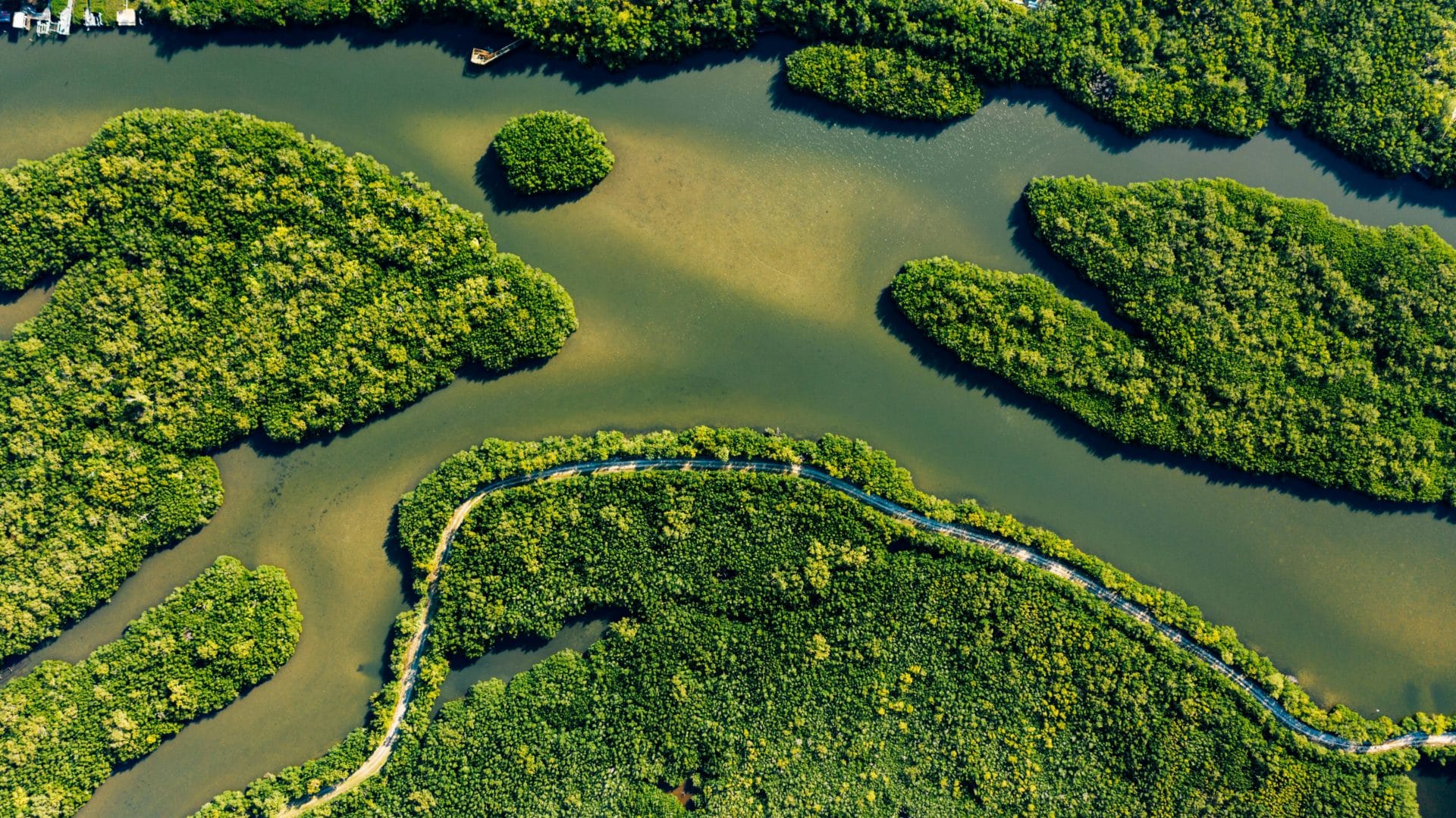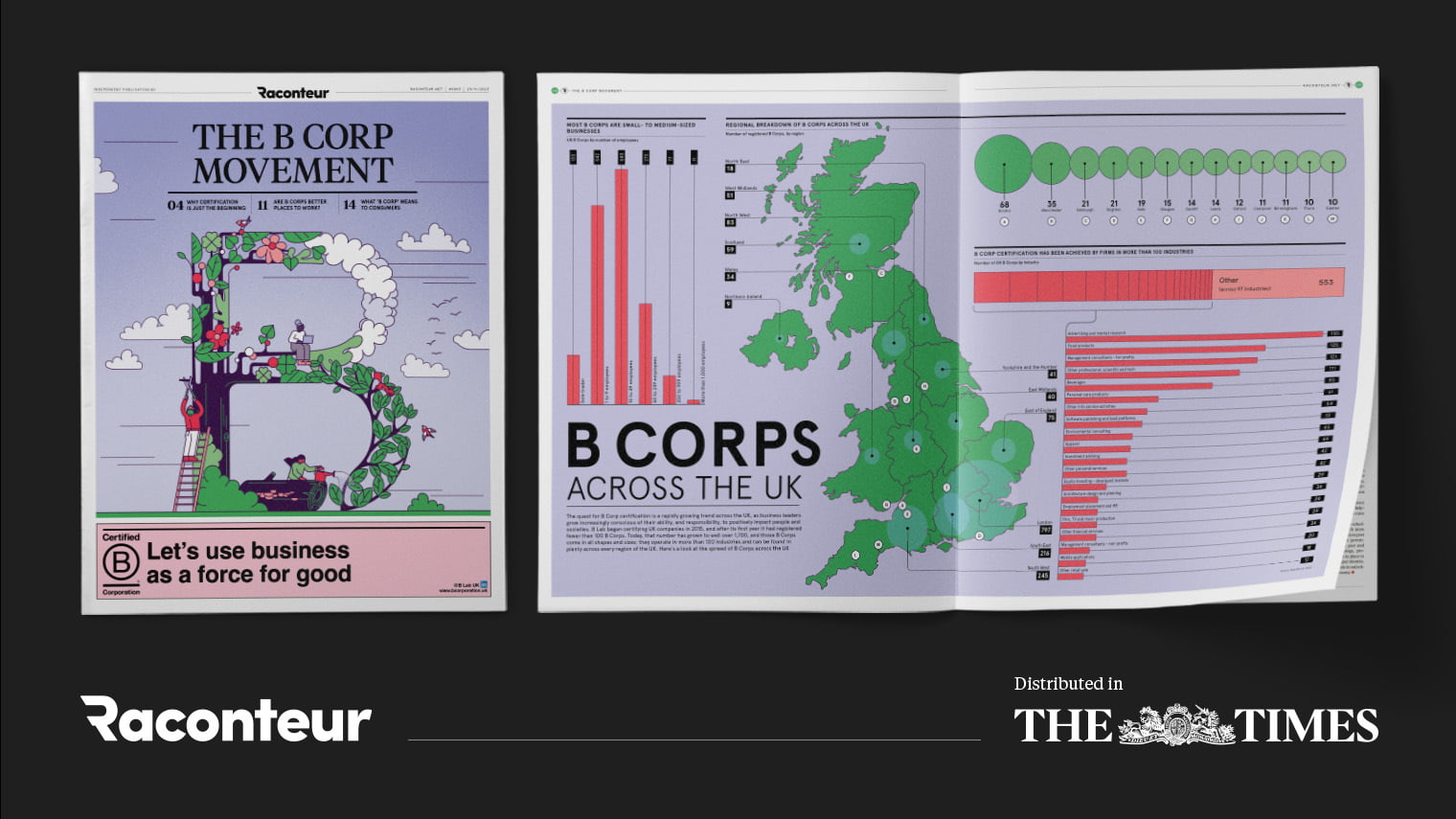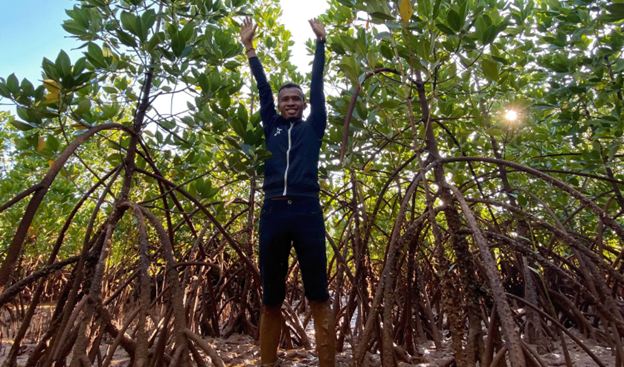
How Do You Plant A Million Trees In Three Years?
When I was a kid at primary school, I used to go conker collecting every autumn around the time of my birthday. There was no better feeling than pushing open a little crack in the spiky shell to reveal a beautiful, shiny conker! I’d collect hundreds each year and store them in shoe boxes under my bed. After a while, they would turn grey and wrinkly, grow mould, and start to smell bad…so I would throw them into the flower bed in our back garden.
One year, around 1990, my Dad noticed one of the conkers had sprouted and he brought it back inside to show me and we planted it in a pot and put it on the window ledge. It grew and grew, so we planted it in the flower bed and it wasn’t long before it was taller than me. We needed to move it somewhere with more space to grow, so we dug it up but accidentally cut off its main root. We assumed that it would die, but planted it near the road at the front of our house anyway.
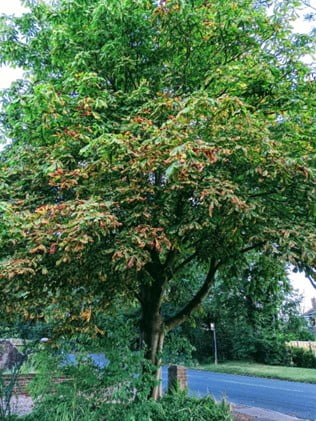
This is the tree now, over thirty years later. I have such pride every time I see it. Last summer I spotted a couple sitting on the wall, sheltering in the shade of the tree while they waited for the bus. Since I left home, my parents pick up the first conker that falls from the tree every year and give it to me. It’s such a nice way to stay connected with the story of this tree.

Perhaps it was this experience, combined with the deepening climate crisis that has compelled me to look for opportunities to take action to support nature to thrive. Three and a half years ago, not long after taking over as Managing Director of Propellernet with my Co-MD James, we worked on a vision for the company with the leadership team. We already had a strong culture based around people and purpose and we really wanted to do something radical for the planet. We decided on a three-pronged approach to kick us off:
- REDUCE: to commit to achieving net zero by 2030
- REMOVE: to eliminate our historical carbon emissions through funding carbon removal
- RESTORE: to tangibly and positively impact nature and biodiversity loss
The first two goals had clear measureability in their definition. I suggested that for our nature restoration goal we should plant a million trees over the next three years. We loved the simplicity of this mission. It needed very little explanation for colleagues, clients and the wider public to understand what we were going to do.
We weren’t going to be planting conker trees, or even other native UK trees, but large-scale reforestation in the Global South. We wanted to contribute a meaningful amount towards replacing some of the 32% of trees that the planet has lost since industrialisation*. We don’t talk about offsetting…we talk about large-scale nature restoration. It is not the same thing at all. In fact, if we were to use trees to offset our company’s carbon footprint, we would need between 10,000-20,000 trees. The lack of credibility and ambition in this idea felt woefully inadequate to us.
Having done our research, we concluded that the best trees to invest in planting were Mangroves. Not only do they sequester four times the carbon of rainforests**, they provide vital marine habitats and protect land from erosion in countries that are feeling the biggest impacts of climate change. In Madagascar, over 90% of primary forests have been destroyed***. It felt like the perfect place to start.

Image source: Pinwheel – Eden Reforestation
Our investment into Global South communities also contributes to the much-needed private sector funding of loss and damage for those most impacted by climate breakdown. We are passionate about climate justice as a key part of our responsibility in taking climate action. With our target set on one million trees, we had to find out how much it would cost and who we could partner with to plant the trees in a way that gave us confidence that the tree planting was being managed properly. I’d heard about ecologi.com from someone else at Propellernet and sent them an email to set up a call:
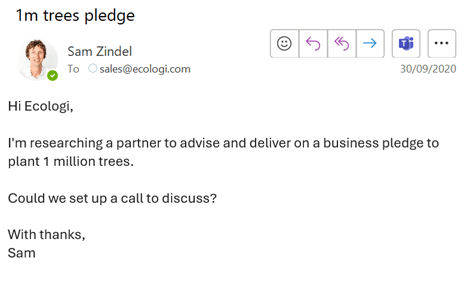
I left my first call with Ecologi feeling reassured about their verification process and open bookkeeping practice. They used Eden Reforestation to plant the trees, who carry the Gold Standard certification for their work, which represents high integrity. Ecologi also does a great job of visualising the tree planting you do with a “virtual forest dashboard”, which I knew would help us communicate our story.
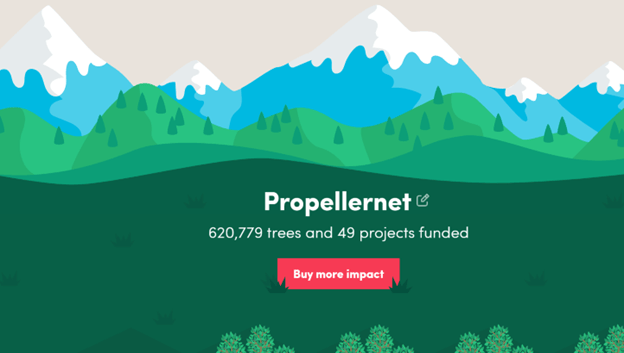
How much does a million trees cost? We’re a small business, with limited resources, but we’re good at achieving things we put our mind to. As it turns out, our initial estimate was £120,000 (or £0.12 per tree). So over three years, it was £40,000 a year. We put this into our budget and worked on the basis of contributing 1.2% of our revenue to our endeavor. (We liked the feeling of going above the Patagonia defined campaign of 1% for the planet)
Now it was time to bring the whole agency on board with our planned journey. We gifted everyone 100 trees to plant in our virtual forest and set up a tracking map based on the idea of “what would it look like if we planted our trees in our hometown of Brighton and Hove?”
Every time we planted a significant number of trees, we coloured in a green space that was calculated based on the area the mangroves we planted will take up. This visual brought home the scale of tree planting we were undertaking. When the two largest parks in Brighton were filled within six months, the team members who did Park Run on a Saturday morning were able to look out across the parks and visualise the whole thing full of new trees.
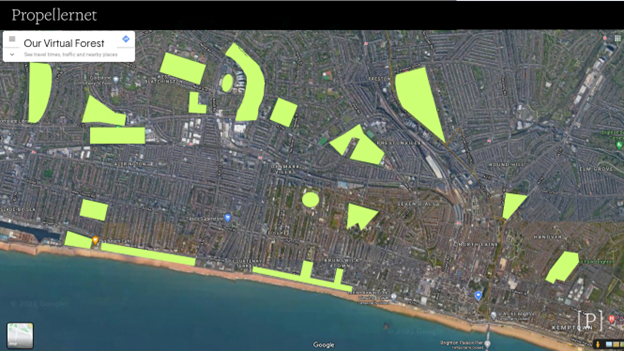
New employees got 250 trees to welcome them and we gifted all of our clients 1,000 trees for Christmas. We started to see trees as currency running through our business transactions and paid for large “tree dividends” when we hit quarterly commercial targets.
We used ecologi’s “climate positive workforce” monthly subscription idea and re-branded it “a pension for the planet” because we offered to match monthly salary sacrifices by staff to double the investment in climate action. It was min £4/month and no maximum. 100% of the team signed up and the individual amounts varied from £4 to £40. This helped raise another £350/month to fund our trees.
Over the next eighteen months, we made great progress and reached over 400,000 towards our goal. Then we had a shock to the system. Due to a combination of rising costs and increased demand, the cost of the trees we were buying went up 50% to £0.18/tree. We had to work harder to find more funds to keep on track and switched to a new model of 5% of operating profits for the bulk of the funding. Thanks to a commercially successful year, this helped us reach 650,000 by the end of the second year.
More challenges followed as the cost of trees went up again twice more. We had to get more creative to find ways to plant more trees. We refreshed our agency branding and put images of trees and nature at the heart of the brief, along with nature inspired colour palettes. We worked with Ecologi directly as a client and re-invested our fees back into tree planting. We created new virtual forests for all of our clients that are linked to ours and offered to match any tree planting they invested in. When we replaced some of our office furniture, we sold the old tables and chairs for tree donations. We sold our only company car and bought trees with the proceeds.
Instead of gifting money to causes we support, we bought trees and donated them as raffle prizes instead. Anything we spent money on that we could turn into trees, we did. All of the work paid off and we finally reached one million in month 36 of our three year project. We communicate inside the business about the carbon impact of the million trees we have planted. Over 25 years of tree growth, it represents sequestering the equivalent carbon emissions of driving 1.85 billion km in a petrol car. That’s the distance of 4,800 trips to the moon or 46,250 laps of planet Earth. On our way to a million trees, we founded The Million Tree Pledge with several other companies who shared our goal. The pledge now has over 50 companies in it, who have collectively funded 10 million trees to date. Anyone can sign up to get started.
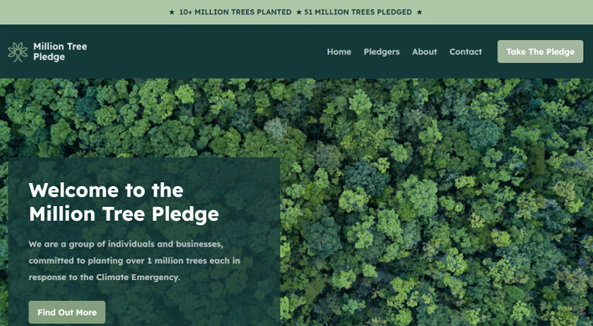
This group of small businesses has planted more trees than the UK Government has funded over the same period (remember all those manifestos quoting a higher and higher number of trees that would be planted… don’t get me started!)
In order to celebrate our million trees, the Propellernet team headed into the South Downs national park to plant some trees on our doorstep in partnership with the local wildlife ranger. These trees are both a symbol of the project’s achievement and a nod to our commitment to continuing our nature restoration work at a local level.
Whilst it is great to have achieved this milestone, we really feel like our work is only just getting started… and our attention is already on a new goal of restoring ocean health in a radical way. That’s one for a separate article later in the year 😉
Sources:
*BBC article – What would happen if the worlds trees disappeared
** Independent article – Magic of mangroves: The plant that sequesters more CO2 than rainforests
*** Eden Reforestation Projects – Madagascar






